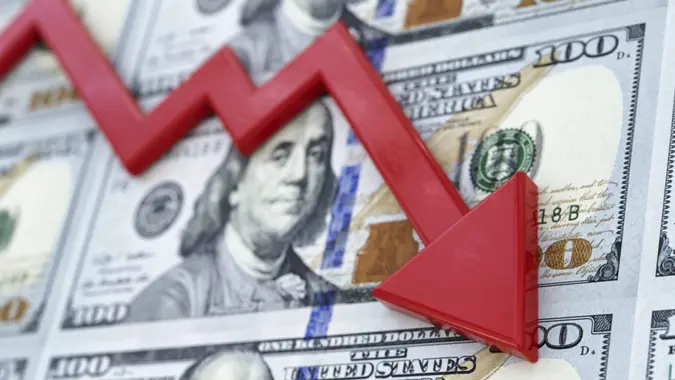GOBankingRates works with many financial advertisers to showcase their products and services to our audiences.
These brands compensate us to advertise their products in ads across our site.
This compensation may impact how and where products appear on this site.

Commitment to Our Readers
GOBankingRates' editorial team is committed to bringing you unbiased reviews and information.
you’ve got the option to read more about oureditorial guidelinesand our products and servicesreview methodology.
Some challenges have brewed for years, while others are more recent.
Furthermore, the potential for a recession to happen remains a dark cloud and would significantly impact economic growth.
And while the worst of the COVID-19 pandemic is far over, its legacy still echoes in boardroom meetings.
The once-in-a-lifetime event exposed just how fragile global supply chains are, leading to sky-high consumer costs globally.
Another hot-button topic was discussed: Artificial intelligence (AI).
The consensus on the relatively nascent technology was its promising results in improved worker productivity.
To date, AI has augmented human labor, not replaced it.
But the possibility of substituting human workers in the future is not entirely out of the equation.
The biggest roadblock across industries is finding skilled workers who can successfully integrate the technology into operations.
And for good reason.
Additional geopolitical risks include cyberattacks by foreign entities and a sharp rise in energy costs.
Economic Uncertainty and Recession Fears
Forty-six percent of CEOs fear a possible recession for 2025.
This trend is down from 53% last year, but nonetheless, the threat remains.
The Oracle of Omaha is holding a record $325 billion in cold-hard cash.
Could he be onto something?
Only time will tell.
The Federal Debt
The U.S. government carries a national debt of $36.22 trillion.
And Wall Street is worried.
Supply Chain Resilience and Changes
The vulnerability of supply chains in recent years has not gone unnoticed.
Seventy-one percent of CEOs plan to restructure their companys supply chains within the next three to five years.
Luckily, not many CEOs plan to raise prices in 2025. it’s possible for you to learn more about GOBankingRates processes and standards in oureditorial policy.
Share This Article:



